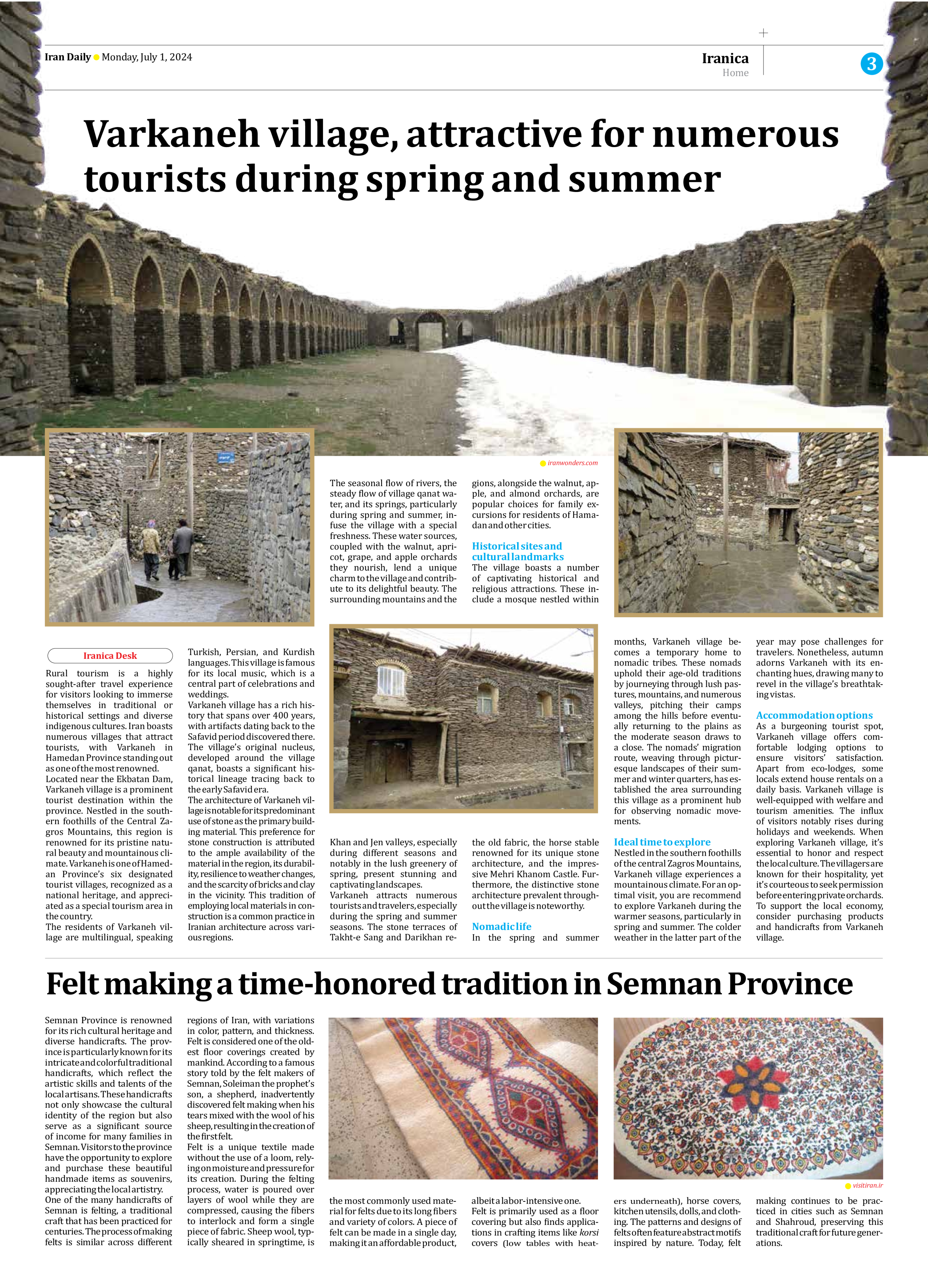
Felt making a time-honored tradition in Semnan Province
Semnan Province is renowned for its rich cultural heritage and diverse handicrafts. The province is particularly known for its intricate and colorful traditional handicrafts, which reflect the artistic skills and talents of the local artisans. These handicrafts not only showcase the cultural identity of the region but also serve as a significant source of income for many families in Semnan. Visitors to the province have the opportunity to explore and purchase these beautiful handmade items as souvenirs, appreciating the local artistry.
One of the many handicrafts of Semnan is felting, a traditional craft that has been practiced for centuries. The process of making felts is similar across different regions of Iran, with variations in color, pattern, and thickness. Felt is considered one of the oldest floor coverings created by mankind. According to a famous story told by the felt makers of Semnan, Soleiman the prophet’s son, a shepherd, inadvertently discovered felt making when his tears mixed with the wool of his sheep, resulting in the creation of the first felt.
Felt is a unique textile made without the use of a loom, relying on moisture and pressure for its creation. During the felting process, water is poured over layers of wool while they are compressed, causing the fibers to interlock and form a single piece of fabric. Sheep wool, typically sheared in springtime, is the most commonly used material for felts due to its long fibers and variety of colors. A piece of felt can be made in a single day, making it an affordable product, albeit a labor-intensive one.
Felt is primarily used as a floor covering but also finds applications in crafting items like korsi covers (low tables with heaters underneath), horse covers, kitchen utensils, dolls, and clothing. The patterns and designs of felts often feature abstract motifs inspired by nature. Today, felt making continues to be practiced in cities such as Semnan and Shahroud, preserving this traditional craft for future generations.







